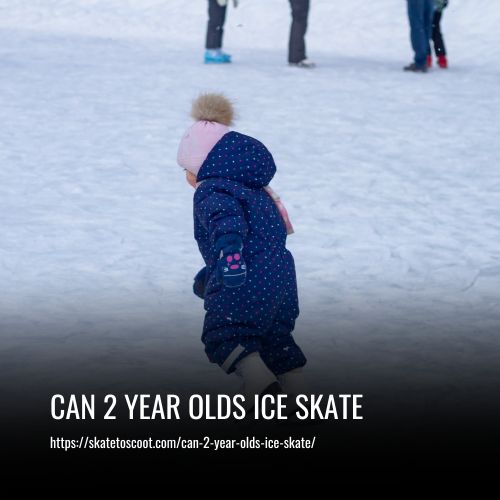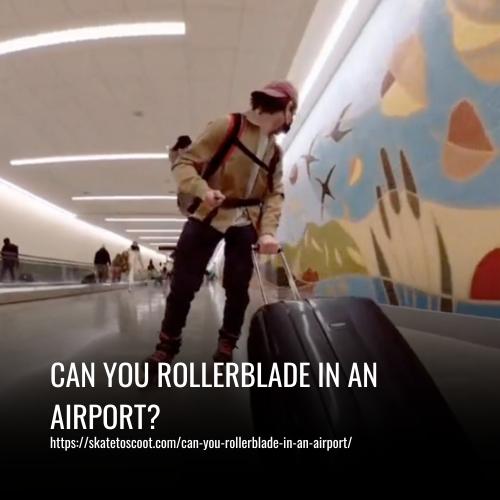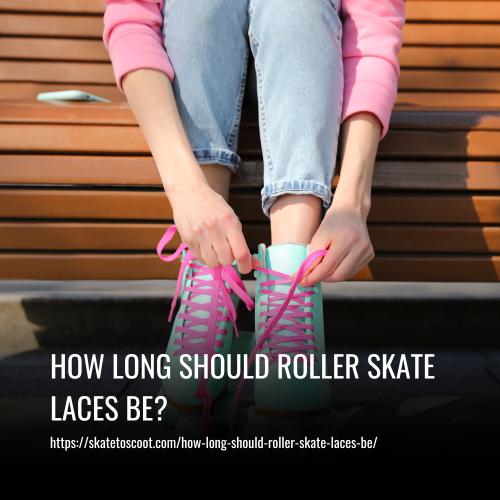As an Amazon Associate we earn from qualifying purchases.
The question of whether or not a 2 year old can ice skate has no definitive answer. While any kid who can walk can skate, it’s usually recommended to wait until age 3 before teaching them how to skate. This is because the right skates and equipment must be acquired for their skating session.
You’ll want to keep comfort a priority when shopping around for skates – skates that aren’t the right size or fit could cause discomfort while skating. Besides getting skates, you should also bring safety equipment such as a helmet, gloves, and knee pads. During the actual skating session, make sure to keep it short and fun – once your little one starts looking tired, call it quits and resume at another time.
So in summary, while 2 year olds can technically ice skate but due to safety concerns it is best to wait till they are older before you start teaching them how to ice skate!

How Old Should Your Child Be To Start Ice Skating?
The age to start teaching a kid ice skating varies from child to child. Most experts believe that once a child can walk, they can also balance on skates, though some may be able to do so as early as two years old.
Skating classes often accept children starting at three years old, with the understanding that the physical and cognitive capability of each individual will vary. It’s important for parents to assess their child’s physical capabilities and understanding of instructions before enrolling in an ice skating class or lesson.
Generally speaking, the right age for your child will depend entirely on them—not necessarily what experts recommend!
What is the Right Ice Skate for Kids?
Choosing the right ice skates for kids is essential if you want to make sure they learn to skate effectively and safely. Plastic skate boots with adjustable straps tend to be the best option for kids, as their feet can grow over time and the adjustable straps will allow for a snug fit even when wearing thick socks.
The ideal skating boots have a soft inner boot and come in junior sizes – it’s a good idea to take your child along when choosing their skates so they get something that fits them perfectly.
You should look specifically for single-bladed adjustable boots since these are most suitable for kids learning to skate, as they provide extra support at the back of the boot and reduce the risk of little ones falling backward.
On top of this, you should also avoid skates with toe picks as there isn’t much use for these unless your kid has already mastered their skating skills, plus they can increase the risk of falls.
It may be worth going through all these steps before actually buying your child’s skates as new ones can be expensive, and children usually outgrow them quickly after winter has gone. You could try renting first, or explore used options if available.
Skating Accessories That Kids Need
If you want your kids to have a fun and safe ice skating experience, it’s essential to bring the right accessories. Without them, your child may not be able to skate safely or properly. Some of the accessories you’ll need for your budding skater include skates, safety pads, gloves, thermals, helmets, and shin guards.
1. Helmet
Safety is a priority when it comes to letting kids get on the ice and skate. That’s why having the right helmet is essential if you want your child to learn to skate. A helmet can go a long way in guarding against falls, which can be painful and even harmful.
2. Gloves or Mittens
When it comes to protecting your child from the cold, Gloves or Mittens are two great options. Gloves provide more insulation than mittens and can also help your child get back up on their feet if they slip. Ice hockey gloves are a great option if you want extra protection from the cold and from falls. However, if your kid prefers something simpler, regular mittens at a fraction of the cost may be the way to go.
With gloves or mittens, they’ll have reliable insulation that will keep them safe and comfortable no matter what winter may throw at them!
3. Knee pads
Falling on ice can cause great distress, so it is essential to equip ourselves with protection in order to prevent serious injury. Knee pads serve as an effective cushion against simple falls, whether due to twisting the wrong way or slipping on a patch of ice.
These indispensable items help protect our knees from bruising in the case of falls. Wearing knee pads can be just the measure you need to ensure that your next slip will not result in a visit to the emergency room.
4. Wrist Guard
When it comes to children’s safety, nothing should be taken for granted and a wrist guard is one of those extra measures to protect them. It is an accessory that kids can put on their wrists during sports, or simply when playing outside.
This added protection helps to minimize the pain from multiple falls and extreme activities, as it prevents kids from bracing themselves with their hands – providing them with a better cushion against harm when falling or sliding. Wrist guards give your children that added layer of security and come highly recommended by skaters and riders, who understand the importance of protecting their wrists in order to skate better.
5. Elbow pads
Elbow pads are a great way to protect your child from getting bruises on their arms. Despite our best efforts, kids can often take tumbles resulting in potential bumps and scrapes – which is why elbow pads are a must! They provide cushioning and eliminate the worry of any bruising around this sensitive area.
6. Padded Pants
Padded Pants are great for protecting youngsters’ delicate backsides when they start to explore their environment. We all know that toddlers are notorious for accidents, and padded pants can help minimize the pain associated with slipping and falling backward.
How to Teach Your Toddler to Ice Skate
Learning how to ice skate with a toddler can be an enjoyable and rewarding experience! The best way is to start off by strapping skates on while they are still off the ice.
Demonstrate how to take big steps similar to marching and focus on balance as much as possible. At first, you may need to offer support or a helping hand, but eventually, your child should get the hang of it and do it without any help.
Once your little one has mastered the basics, then it’s time to hit the ice rink! While some parents prefer using sliding walkers for extra stability, others opt for just holding hands during initial sessions. Ultimately, the goal is for your toddler to be able to skate confidently around the rink without any assistance.
Although those slippery walkers may seem tempting, investing in one might not be necessary for teaching your toddler how to ice skate!
Tips For Teaching Your Child How To Skate
Teaching your child how to skate can be daunting, but it doesn’t have to be. Here are some tips to follow when you’re teaching your kid to skate:
First, make sure you’ve got all of the protective equipment and gear that you need. Having the proper safety gear is key for making sure your little one stays safe on the ice!
Second, find a rink with a kid-friendly crowd. Smaller crowds can help reduce anxiety and make learning more fun for everyone involved.
Third, depending on their age and ability level, you may want to use a training aid like an ice walker to help them get used to gliding around on the ice.
It is essential to ensure that one does not lean forward while using an ice walker so they can learn how to skate without it.
Fourth, patience is key! Kids learn at their own pace and it’s important not to push them too hard or they’ll become frustrated and overwhelmed. Lastly, if needed enrolling in classes can really help kids get the basics down so they can develop their skills over time.
FAQs
Yes, 2 year old can learn to ice skate with the proper guidance and safety equipment.
It is important to make sure your child has the proper safety gear such as a helmet, elbow pads, knee pads, and wrist guards when learning how to ice skate.
No, it is not necessary to use an ice walker when teaching your toddler how to skate but it can be helpful for providing extra stability while they are getting used to gliding around on the ice.
When teaching your child how to skate, make sure you have all of the necessary protective gear and find a rink with a kid-friendly crowd. Additionally, patience is key, and enrolling in classes can help kids get the basics down so they can develop their skills over time.
Preschool age is typically the best age for children to learn how to skate as they have usually developed a good sense of balance by then. Skate World offers classes designed for younger beginner skaters so that they can confidently and safely make their first venture onto the rink.
Conclusion:
Ice skating is an incredible experience for kids of all ages, but it is important to think about whether or not your two-year-old is ready for it. If your child is passionate about taking to the ice and you believe that they are developmentally ready, then don’t be afraid to give them the opportunity—you will both love every second of it!
With proper precautions, positive reinforcement, and careful supervision, you can encourage ice skating safety – teaching your little ones a knack for balance while introducing them to a lifelong love of winter sports.
Amazon and the Amazon logo are trademarks of Amazon.com, Inc, or its affiliates.



